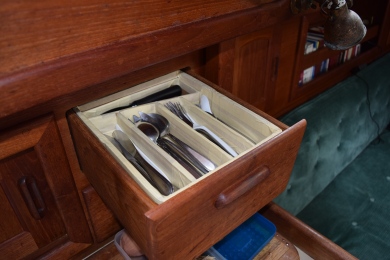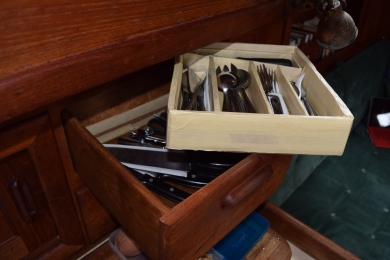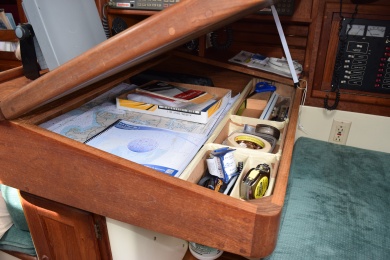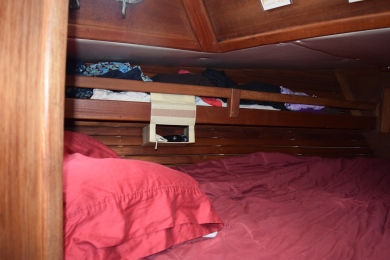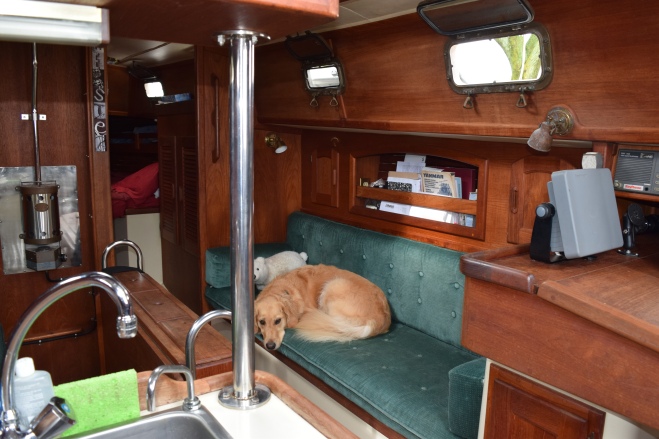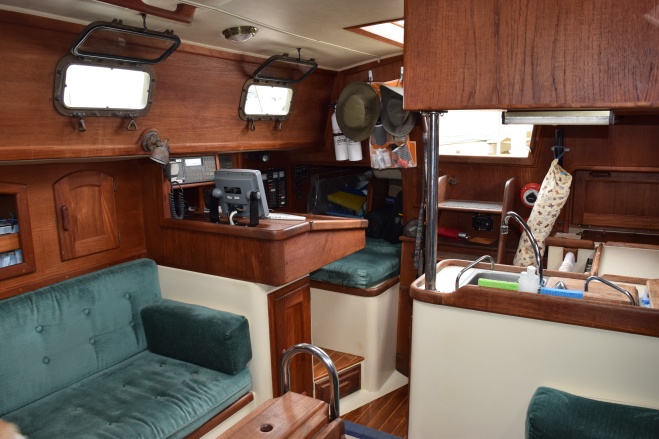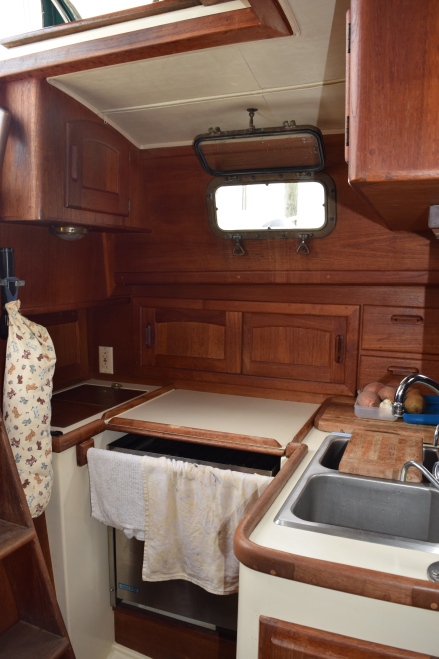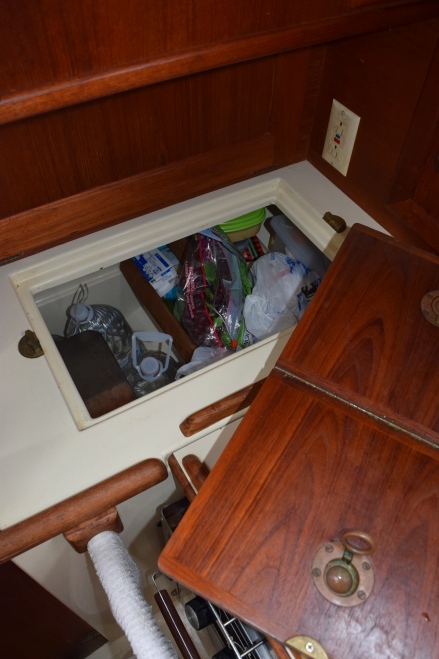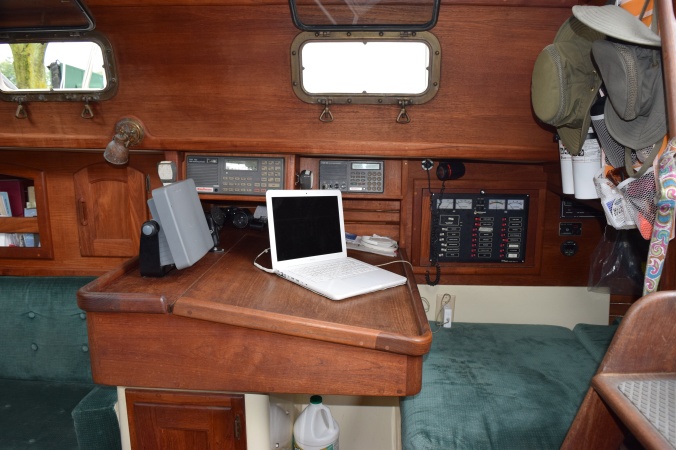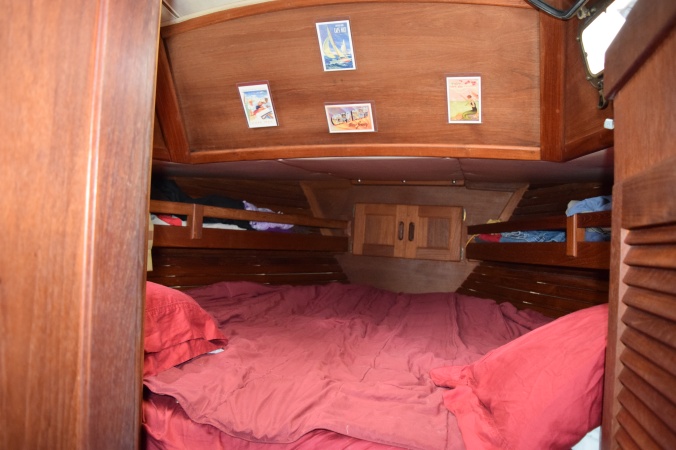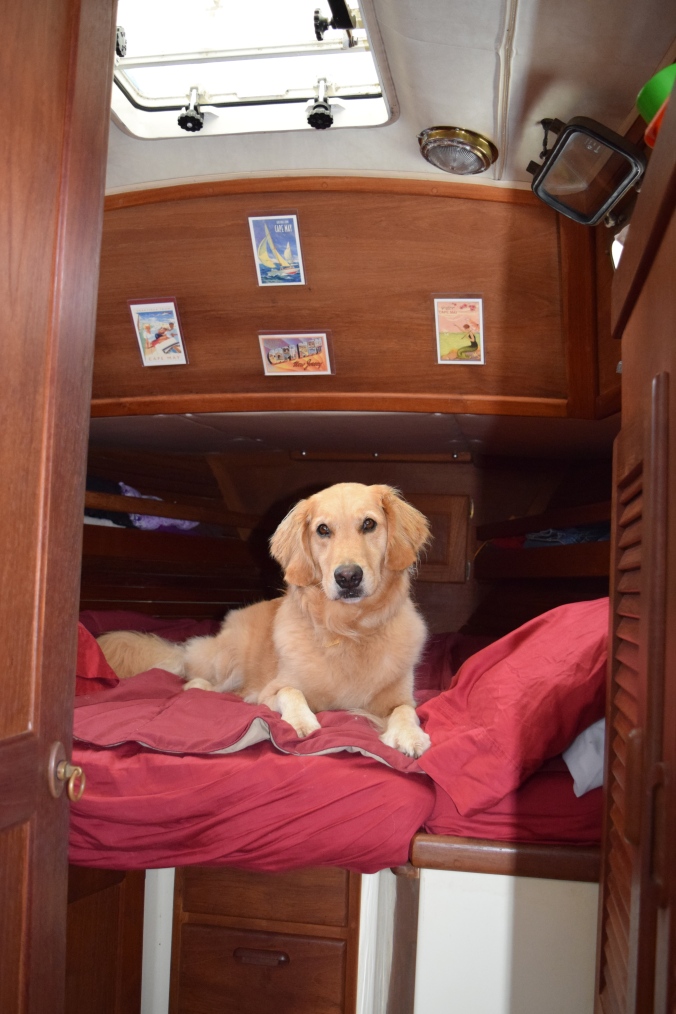My wife Pamela and I were talking yesterday about the old proposition, “Life is a journey, not a destination.” Attributed by various Internet sources of variable reliability to Buddha, Ralph Waldo Emerson, and theologian Lynn H. Hough, the proposition suggests that how you travel–the quality of the spirit you bring into each day’s movements–is more important than any point toward which you happen to be moving.
By that criterion, I am a lousy traveler. Because I’ve had a destination in the state of Florida in mind for three months now.
And the two months we just spent in the state of Virginia, waiting for our misaligned stars to set themselves straight and point the way south, now have my teeth set firmly on edge.
Messrs. Buddha, Emerson, and Hough would no doubt think I had a spiritual problem. And I do believe they’d be right.
Entering Virginia
On November 30, 2015, Pamela, Honey the Golden Retriever and I were motoring down the Chesapeake Bay, crossing the mouth of the Potomac River into Virginia from the neighboring state of Maryland, when we heard the first sound from Meander that would interrupt the progress we were making toward the Florida Keys.
That sound caused us to alter our short-term plans. Instead of proceeding directly toward Norfolk and Mile Marker Zero at the beginning of that fabled part of the Intracoastal Waterway (ICW) known as the Ditch, we made what we hoped would be a short detour to the small but important boating community of Deltaville to fix whatever trouble we had picked up in the Potomac.
There, we found that what we had heard was the unfortunate sound of our cutless bearing being drawn up into our stern tube. We also found that our feathering propeller was badly in need of being sent across the country for reconditioning by its manufacturer’s U.S. affiliate; and that our propeller shaft was scorched in two places, requiring a custom replacement to be machined. So as long as we were waiting for all that to happen, we decided to have Meander’s engine’s injectors inspected and reconditioned, and her engine mounts replaced.
All of this was a very good, necessary, and productive time. So much so, in fact, that I didn’t really mind the two-and-one-half weeks it took us to get underway again.
We got underway again on December 18, 2015; and one hour after leaving the dock, we hit a line in the water that would turn us back. Faithful readers of this blog will already have read about our December 18 in my post about The Longest Day.
Staying in Virginia
When we reached Deltaville again, we discovered that the line we picked up basically undid the cutless bearing work we just had done. (One brand new cutless bearing; one hour of service life; one premature and painful demise. RIP.)
But a few days before our yard hauled Meander out to discover that small problem, our marine technician had found a much larger one as we sat on the dock: the gears in our gearbox had been ground into a collection of small bronze shards on the longest day, probably toward its end when I ran us up onto a shoal and had to pound Meander’s engine to get off again before a gale predicted for later that day descended upon us.
With the relative inactivity of Christmas and the New Year upon us, this second work period in Deltaville felt like swimming in molasses as we went through ordering a new cutless bearing, locating and ordering a new gearbox, arranging to have the newly reconditioned propeller sent back from across the country for refitting (since we were waiting again, why not?), and clearing up the various misunderstandings it turned out our various vendors had been holding about our various holiday shipping and staffing schedules. And by the time the work period had dripped to its end, another three weeks had slid passed.
Getting a little impatient, we decided to leave as soon as the work was done, foregoing the sea trial that would have told our marine technician that the pitch on our newly reinstalled prop needed a final adjustment.
Moving through Virginia
We departed Deltaville again on January 7, 2016. And long before we reached Hampton, VA that evening, we knew from our engine’s inability to get to within seventy percent of its maximum specified engine speed that we were badly “overpropped.” After a confirming phone call back to our marine technician, we decided with great precision of intent that we would do this “not necessarily right away,” but “sooner” rather than “later.”
After the relative remoteness of Deltaville, Hampton was pleasantly urban. We stayed through an extended weekend during which we ate at restaurants, drank beer at bars, and bought Astronaut Ice Cream (freeze-dried!) at the museum store of the Virginia Air and Space Center, a large, contemporary structure on the Hampton waterfront designed to educate and entertain visitors who would otherwise get underfoot at the nearby NASA Langley Research Center.
Five days later, on January 12, we took Meander across Hampton Roads (this is the name of a waterway, dear reader, not a series of highways as seemingly implied by a TV ad we saw for a local car dealership) and finally reached Mile Marker Zero.
Motoring down the Elizabeth River to the ICW’s Virginia Cut, we came to rest that evening in Chesapeake, VA on the dock of a well-respected boatyard in the Albemarle and Chesapeake Canal.
Overstaying in Virginia
And we decided there to take the bull by the horns and get our prop’s pitch adjusted, a nice simple task that also ended up taking twice as long as we expected.
What we expected was a short haul and a three-hour job. But our expectations changed when, as Meander was being hauled out, it occurred to me to discuss with the yard’s mechanic a topic of some subtlety that our Deltaville marine technician had advised me to monitor quite closely.
“Before we start,” I suggested, “we should talk about the type of grease we’ll need to relube the prop.”
“The Teflon grease?” replied the mechanic.
Ah, there’s the rub.
Our Deltaville marine tech had warned us that many yards would expect to use Teflon grease in our feathering prop, unaware that the manufacturer’s instructions explicitly warn against it. The working pressures to which the prop’s gears and grooves are subject are high enough to wash Teflon grease out in a few weeks. And white lithium, another type of grease commonly kept in boatyards, was also apparently not up to this particular job. What we wanted, our marine tech and the manufacturer’s instructions noted, was Lubriplate 130-AA, a brand-name calcium grease rated for extreme pressure applications.
So we lost another day, first to educate ourselves and the boatyard staff about the differences between these types of grease, and then to have the staff confirm our findings in a phone call to the manufacturer’s U.S. affiliate, and then to ensure the right stuff was ordered, received and applied.
No sweat, I said. Well worth the investment in preserving the longevity of our $1,000 prop reconditioning job, I said. Pam, by this time noticing a certain stridency starting to creep into my increasingly forced declarations of optimism, sought to fend that tone off by heartily encouraging my brave attempts to sustain that optimism.
And so we were ready. Expecting to leave Chesapeake, VA behind, we cast off from the boatyard dock at 8:05 AM on Saturday, January 16, we once again resumed our trip south.
And once again, we were turned back—this time, by a clutch cable that decided to snap underway.
Returning to our boatyard, we landed again at 9:30 AM to wait out another long weekend. On Monday, we located our mechanic, had him remove four seized bolts from the top of our steering pedestal so we could get to the broken cable and related parts (six hours of labor, not one of which was wasted), and got the parts identified and ordered.
The parts didn’t ship until Wednesday, and didn’t arrive until mid-afternoon Friday. And I didn’t get done installing them until Sunday afternoon, leaving just enough time in the day for a quick sea trial to make sure this time that everything was, in fact, in order.
Another week gone, along with the last of my patience.
Learning from Virginia
This past Monday, January 25, 2016, we left Chesapeake, VA again, motoring out of the Albemarle and Chesapeake Canal into the North Landing River. And at Green Daymark No. 63, we slipped, finally, into North Carolina, leaving Virginia in the rear view mirror.
The distance we traveled through the state, from the Potomac River to that daymark, is about 150 miles. And it took us eight weeks to cover it.
That’s just too long a time.
I should point out here that I have nothing against the state of Virginia. Indeed, I love Virginia. It is my father’s birthplace and, for that reason among others, the sacred ground of some of the best family vacations I ever experienced as a kid. It has mountains to the west, the Bay to the east, and mighty rivers running down from one to the other. It has natural beauty on every summit and in every valley, along every river bank and around each bend of every waterway. It has history. It has culture. And it has good, kind, caring people who have carved out distinctive and noteworthy lives amongst these treasures, and who have made our time in their lovely state the best that our circumstances would permit.
No, the state of Virginia is not the enemy.
Rather, the enemy is my state of mind. One that has become consumed in this last week by resenting the delays, worrying about the costs, and despairing of ever getting us to the warmth we sought when we started seeking the ICW back in November.
Tonight, I’m writing from a marina on North Carolina’s Alligator River, about four miles south of the Albemarle Sound. That puts us at Statute Mile 84 on a waterway that stretches more than another 900 miles to the Florida Keys.
And that brings me back to the conversation Pamela and I had yesterday. I am not one who has, in the past, readily embraced the idea that the journey is more important than the destination. Rather, I have more often held that a good destination provides the goal of, and, therefore, the meaning for any journey worth taking.
A journey without a destination is just. . . well, a meandering.
(I never liked that name.)
On the other hand, I have learned more recently to appreciate that it costs too much to sacrifice the quality and the spirit of one’s being today to the anxiety of striving for some far-off destination to be gained, if ever, in some distant and ill-defined tomorrow. Rather, the proper attitude, I suspect, is to value and cherish both—the moment I presently occupy on my journey, and the destination that makes my journey worth taking.
And the point of the original saying is to remember that only the first of these is accessible to me here and now.
With that in mind, I simply have to allow the fact that the delays that have befallen us were in the here-and-now, and the places those delays allowed us to explore in greater depth were also in the here-and-now, and the people who inhabited them were, finally, also in the here-and-now. I would not have found any of them anywhere else.
And whatever else should befall us in the days ahead, I had better learn today to cast off resentment, worry, and despair, and to relax more in the here-and-now.
Because our destination is more than 900 miles in front of us. And if I don’t relax, there won’t be anything left of me to inhabit it when we arrive.












